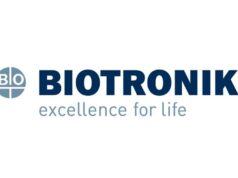
A phase II study exploring baroreflex activation therapy treatment for heart failure patients with a reduced ejection fraction has found greater benefits for patients without a cardiac resynchronisation therapy (CRT) device than for patients with CRT.
Michael Zile (Medical University of South Carolina, Charleston, USA), presented the results of the multinational, prospective, randomised controlled clinical trial on behalf of the BAT for HFrEF Study Group, at a late-breaking trial session at HRS 2015.
“Patients with heart failure, particularly those with reduced ejection fraction have persistent activation of the sympathetic nervous system and persistent inhibition of the parasympathetic nervous system. This autonomic imbalance is pivotal to the development and progression of heart failure and particularly the morbidity and mortality that is associated with it.” Zile told delegates. “Baroreflex activation acts through a central integrated mechanism to both decrease sympathetic tone and increase parasympathetic tone rebalancing this imbalance.”
In this study, baroreflex activation therapy was evaluated with Barostim neo (CVRx), a neuromodulation device, which consists of an electrode surgically implanted on the carotid sinus (outside of the bloodstream) and connected to a surgically implanted subcutaneous power unit.
Overall results with baroreflex activation therapy, presented at the American College of Cardiology’s 64th Annual Scientific Session in March by William Abraham (The Ohio State University, Columbus, USA) and published in the Journal of the American College of Cardiology-Heart Failure before print, showed significantly improved patient functional and exercise capability, as well as quality of life, when compared to optimal medical therapy in well-treated New York Heart Association Class III heart failure patients.
In the study presented at HRS 2015, the main objective was to evaluate the safety and efficacy of the baroreflex activation therapy comparing patients previously treated with cardiac resynchronisation therapy (CRT) to patients without CRT in order to determine the group of patients who may benefit the most from this therapy.
The study randomised 146 patients (1:1) to receive baroreflex activation therapy plus optimal medical and device therapy (BAT patients, n=76) vs. optimal medical and device therapy alone (Control patients, n=70). Forty-five patients had a CRT at baseline and 95 patients did not have a CRT. Enrolment took place in USA, Germany, Italy, France and Canada. Fifty per cent of the patients were randomised from the USA. Patients had NYHA functional class III, left ventricular ejection fraction ≤35%, six-minute hall walk distance between 150-400m. They did not have restriction on QRS, concomitant devices or atrial fibrillation presence.
At six months in the no-CRT group, Zile reported that quality of life scores significantly improved, six-minute hall walk distance and left ventricular ejection fraction significantly increased, and heart failure hospitalisations were significantly reduced compared to controls. “The results of the study are remarkable,” Zile said. “These data are not sufficient to rule out a therapeutic effect in CRT patients, but the effect was more pronounced in patients without CRT.”
A phase III pivotal trial for the device is expected to start in September 2015. Based on the results of the phase II trial, the study will be conducted only in patients without CRT.









